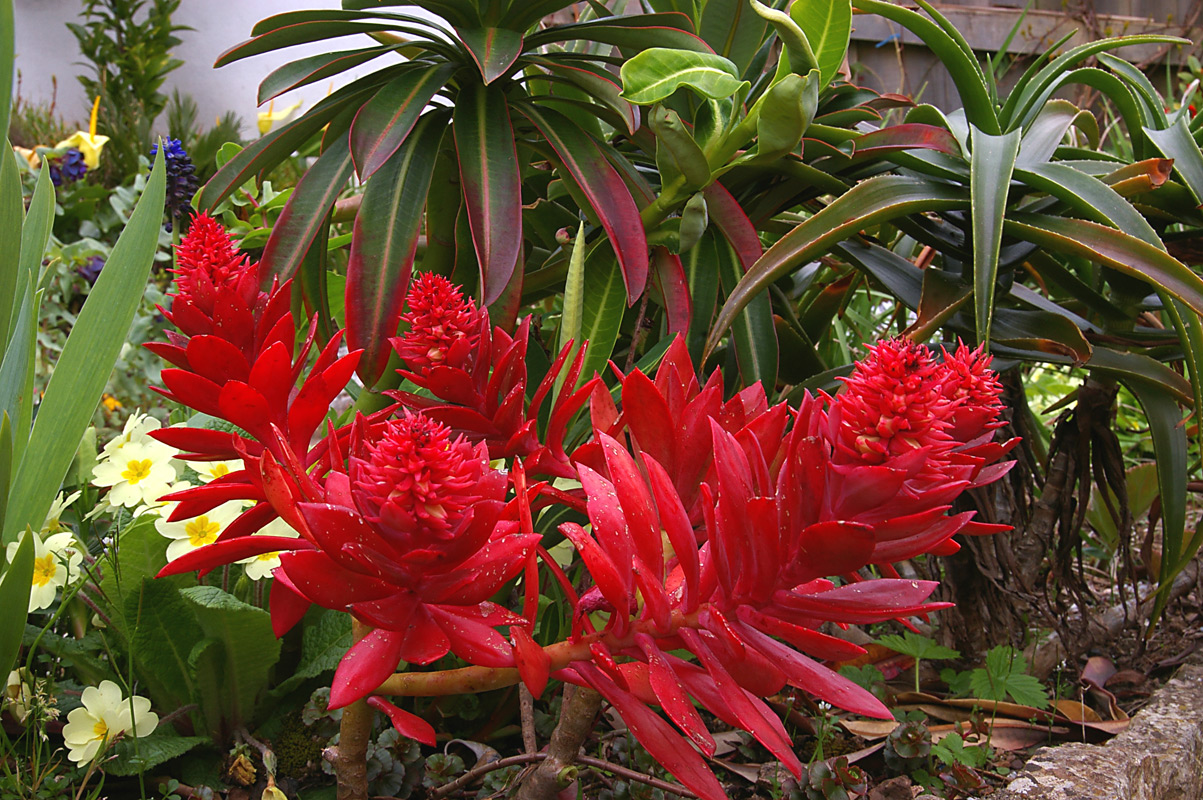
Echeveria rosea like all memebers of the genus is native to cental America and the surrounding areas. Several species are commonly cultivated in rock gardens and often disappoint by rotting away during winter. I used to lose them by the truckkoad before I identified both the right species to grow and the condirions they require. Apart from proucing the typical well-known rosettes echeverias have a few surpises in store. There is the curiously hairy Echeveria setosa, the stemless agave-like E. agavoides (growing to almost 30cm in diameter) , the painted-leaved E. nodulosa to name a few. But one of my favourites is E. rosea. It distinguishes itself on two counts; it is an epiphyte and the whole plant can turn itself a scarlet red during spring. Surprisingly, there are a few species of Echeveria which grow as epiphytes - E. nodulosa, E. australis, E. guatemalensis and E. pittieri. I had previously grown E. rosea in the ground (as in the photograph below) where it rewarded us with brilliant shows of colour. The reason for the colour is no doubt the temporary lack of chlorophyll after the colder months just before the plant resumes normal growth. Fred Dotort (Succulent Plants of the World, Timber Press 2011) writes: "It is the most frequently cultivated of the epiphytic species, but not the easiest, liking very bright shade, cool night-time temperatures, and a good amount of water." In our climate these conditions do not constitute a problem and at Southern Comfort this plant grows well and spreads readily. In the immediate background there is Euphorbia stygiana and Aloe striatula. © Maciej Pomian-Srzednicki, 2017 |
